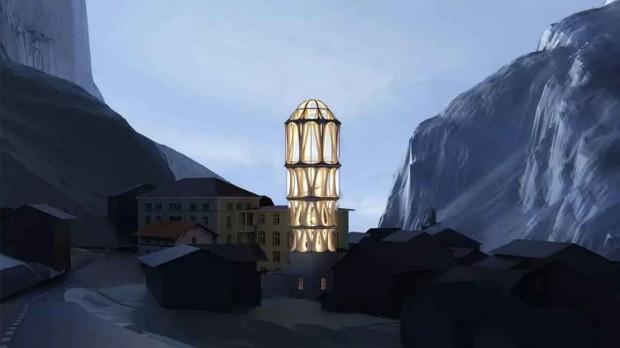With the help of cutting-edge 3D printing technology, the construction of a white tower with four floors has begun in the Swiss Alps. The tower's surfaces, regarded as the World's tallest 3D-printed tower, will be made of soft concrete, which will be accomplished by employing this technologically advanced specialized equipment.

(Photo : Interesting Engineering/Michael Hansmeyer & Benjamin Dillenburger )
Construction of the World's Tallest 3D Printed Tower
On Thursday, Feb. 1, the construction of the World's tallest 3D-printed tower began, a four-story white skyscraper located in the secluded village of Mulegns amid the Swiss Alps incorporating 3D-printed columns inspired by the Tor Alva architectural style.
As mentioned, architects Benjamin Dillenburger and Michael Hansmeyer are responsible for the project's design. Within the framework of the National Competence Center Digital Fabrication, the Digital Building Technologies group at ETH Zurich is working together with the Institute of Structural Analysis and Design (CSBD) and the Institute of Building Materials (PCBM) to develop the technology that will be used in the tower.
Michael Hansmeyer provided a timeline that indicated that the columns of the 3D-printed White Tower are scheduled to be assembled in May 2024. The opening of Tor Alva is anticipated to take place in June 2024. Accordingly, 102 3D-printed columns comprise the White Tower's core design element. The World's tallest 3D-printed tower's front is formed by this equipment, which also serves to sustain the various floors of the building. Columns that are massive and squat generate small and imposing spaces in the lower rooms. It is reportedly noticeable that the rooms on the upper floors get substantially lighter and airier as one ascends the central spiral staircase.
Moreover, vertical spiraling textures accentuate the structure's height, and material-driven horizontal ornaments from the extruded concrete printing process adorn each column. In addition to allowing for powerful spatial experiences, the various column geometries are held together by the cohesiveness of their respective materials.
In addition, white concrete was reportedly used to construct the structure, giving it an air of sophistication and a sense of elegance. Architectural contrast is enhanced through the use of vivid hues and daring formations. Thus, because of its peculiar apertures, the White Tower looks like a lantern at night, which transforms into a lighthouse along the historic Julier Pass road.
Also Read: 8 Best Flooring Materials for Your Dream House: A Homeowner's Guide
Sustainability of The White Tower
Situated atop the tower are 32 branching columns that enclose ethereal, atmospheric chambers and lead guests to a concert venue with vaulted ceilings. The Julier Valley, which can accommodate 45 guests, may be seen from this location.
As stated, construction will undergo a profound transformation due to the breakthroughs being developed in these research sectors. The company created a concrete building like this one by employing a robotic concrete extrusion method, which was done to reduce its environmental impact. Consumption of materials was significantly cut down as a result.
Furthermore, a membrane that can be removed during the winter season will be used to protect the tower from severe weather conditions such as wind and snow. Taking this preventative precaution guarantees that the structure will last for a long time and will be preserved. Also, the White Tower is mesmerizing while the sun sets because of its distinct openings, like a lantern that illuminates the region around it.
Related Article: Compact Modular Robotic Arm Printer Solution To Growing Demand for Affordable Housing







